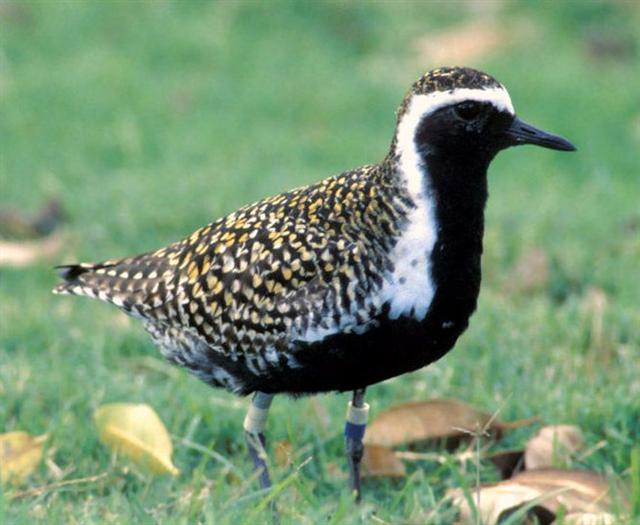The lapwing is not the only species of plover. The following bird is a 'golden plover' of a kind which appears in the Pacific:
(Pacific Golden Plover, Pluvialis fulva, according to Wikipedia) At vae a myth was quoted, in which a Golden Plover has a central role: ... There is a couple residing in one place named Kui and Fakataka. After the couple stay together for a while Fakataka is pregnant. So they go away because they wish to go to another place - they go. The canoe goes and goes, the wind roars, the sea churns, the canoe sinks. Kui expires while Fakataka swims. Fakataka swims and swims, reaching another land. She goes there and stays on the upraised reef in the freshwater pools on the reef, and there delivers her child, a boy child. She gives him the name Taetagaloa. When the baby is born a golden plover flies over and alights upon the reef. (Kua fanau lā te pepe kae lele mai te tuli oi tū mai i te papa). And so the woman thus names various parts of the child beginning with the name 'the plover' (tuli): neck (tuliulu), elbow (tulilima), knee (tulivae) ... The phenomenon of changing seasons is here described by the man drowning while the woman is managing to reach a new land and there give birth to the next generation. This birth happens at the border line between sea and land, on the reef. There is an equivalence between sea and land on one hand and winter and summer on the other. Spring equinox will thus be equal to the reef. At the border a birth occurs. And this border line is where a plover should be located. In Lower Egypt the interface lies in the marshes between sea and land, while on an island the interface is its reef. 3 kinds of 'joints' (turi, tuli) are mentioned - neck, elbow and knee, in falling time order, and we can guess these as referring to the 3 periods of Spring Sun. A plover means a 'rain bird': Plover ... name of several grallatorial [wading] birds, (pop.) lapwing ... f. L. pluvia rain ..." (English Etymology) With Spring Sun gone the season turns into a gray and rainy one. But at other major changeover 'stations' the plover can also be used, viz. as a symbol for the basic idea, which is seasonal change, a 'daybrake'. The flapping wing of a lapwing illustrates a broken wing. This is underlined by the golden plover hovering above the newborn baby boy Taetagaloa, because Fakataka puts names on the changeover stations (tuli) between his 'limbs'. We should remember the words of OgotemmÍli (cfr at hakaturou): ... During his descent the ancestor still possessed the quality of a water spirit, and his body, though preserving its human appearance, owing to it being that of a regenerated man, was equipped with four flexible limbs like serpents after the pattern of the arms of the Great Nummo. The ground was rapidly approaching. The ancestor was still standing, his arms in front of him and the hammer and anvil hanging across his limbs. The shock of his final impact on the earth when he came to the end of the rainbow, scattered in a cloud of dust the animals, vegetables and men disposed on the steps. When calm was restored, the smith was still on the roof, standing erect facing towards the north, his tools still in the same position. But in the shock of landing the hammer and the anvil had broken his arms and legs at the level of elbows and knees, which he did not have before. He thus acquired the joints proper to the new human form, which was to spread over the earth and to devote itself to toil ... Grallatorial means walking on stilts. |
